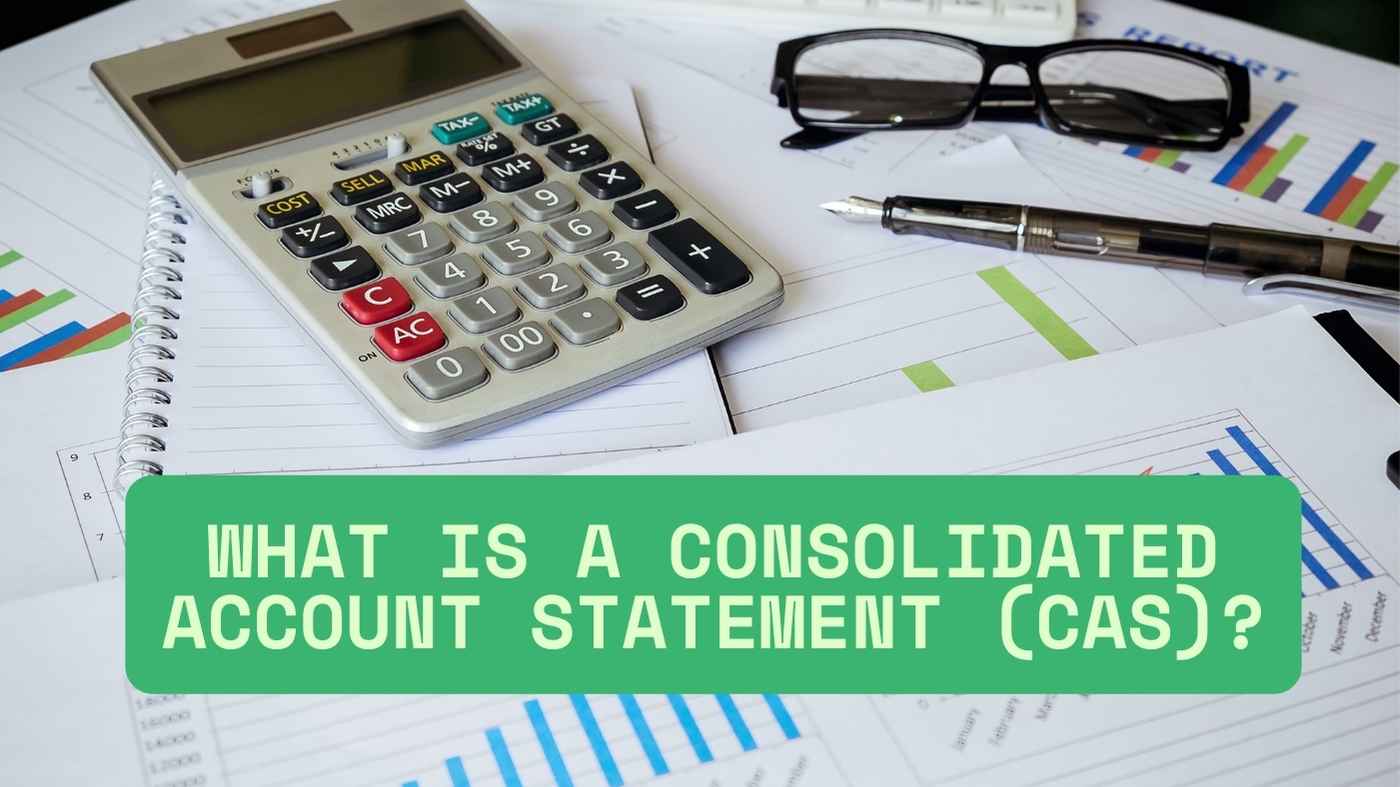Keeping track of multiple mutual fund investments across different Asset Management Companies (AMCs) can be challenging. To simplify this, investors receive a Consolidated Account Statement (CAS)—a single statement that provides a detailed summary of all their mutual fund holdings and transactions.
A CAS helps investors get a comprehensive view of their portfolio, making monitoring their investments easier, assessing performance, and planning future financial decisions. This article covers everything you need to know about CAS, its purpose, issuance process, contents, and how to access it.
Understanding the Consolidated Account Statement (CAS)
A Consolidated Account Statement (CAS) is a combined statement that includes details of all mutual fund transactions and holdings across different fund houses linked to a single PAN (Permanent Account Number). It provides an aggregated view of an investor’s portfolio, helping them track investments efficiently.
Why is a Consolidated Account Statement Important?
A Consolidated Account Statement (CAS) is crucial for investors as it offers a holistic view of their mutual fund holdings across multiple AMCs. Here’s why it is essential:
- Simplifies Portfolio Tracking – Instead of managing multiple statements from different AMCs, CAS consolidates all investments in one place.
- Saves Time & Reduces Hassle – Investors do not need to log into multiple AMC portals or request individual statements.
- Helps in Financial Planning – A single view of all investments aids in better decision-making and goal-based investment planning.
- Monitors Investment Performance – CAS includes details of transactions, NAV, and market value, allowing investors to evaluate portfolio growth.
- Ensures Transparency – Investors can cross-check all mutual fund transactions and holdings, reducing the risk of missing out on any investment.
- Provides Taxation Insights – CAS includes dividends and capital gains reports, which assist in tax filing and compliance.
- Encourages Regular Portfolio Review – Receiving Consolidated Account Statement (CAS) periodically urges investors to review their asset allocation and make necessary adjustments.
Who Provides the Consolidated Account Statement (CAS)?
The Registrar and Transfer Agents (RTAs)—such as CAMS (Computer Age Management Services) and KFin Technologies—are responsible for issuing the CAS. These RTAs manage investor records on behalf of multiple AMCs, making them the central authority for consolidation. Additionally, depositories like NSDL (National Securities Depository Limited) and CDSL (Central Depository Services Limited) may also provide a CAS if an investor holds mutual funds in dematerialised (demat) form.
How Often is the CAS Issued?
The frequency of Consolidated Account Statement issuance depends on the investor’s transaction activity:
- Monthly CAS: If an investor has carried out at least one financial transaction (purchase, redemption, switch, etc.) in any mutual fund folio within a calendar month, a Consolidated Account Statement (CAS) will be sent by the 10th of the following month.
- Half-Yearly CAS: If there have been no transactions in six months, investors receive a half-yearly CAS detailing their holdings as of the end of the period.
What Transactions are Included in the CAS?
The Consolidated Account Statement consolidates all financial transactions, including:
1. Purchases (Lump sum & SIPs)
Mutual fund purchases are recorded in the CAS, whether made as a one-time lump sum investment or through a Systematic Investment Plan (SIP). This allows investors to track their investments in different schemes.
2. Redemptions & Withdrawals
If an investor redeems their mutual fund units, partially or entirely, the CAS will document the transaction details, including the amount withdrawn and the redemption date.
3. Switches Between Schemes
Switching refers to transferring investments from one mutual fund scheme to another within the same fund house. The CAS records these transactions, ensuring a clear trail of fund movements.
4. Dividend Payouts or Reinvestments
The Consolidated Account Statement (CAS) records dividend payouts and reinvestments for investors who opt for dividend-paying mutual funds.
5. Systematic Transfer Plans (STP) & Systematic Withdrawal Plans (SWP)
Systematic Transfer Plan (STP): If an investor sets up an STP to move funds periodically from one scheme to another, all such transactions are documented in the CAS.
Systematic Withdrawal Plan (SWP): If an investor withdraws a fixed amount from a mutual fund at regular intervals (e.g., for retirement income), these transactions are also reflected in the CAS.
Will All My Portfolios Appear in a Single CAS?
A CAS consolidates all mutual fund holdings linked to the same PAN. However, if an investor has used different PANs for different folios, those investments will not be merged into a single statement.
What Happens If No Transactions Occur in a Particular Month?
A CAS will not be generated if an investor makes no financial transactions in a specific month. However, investors will continue receiving a half-yearly statement.
What If There is No Activity in My Folio for a Long Time?
If an investor has had no transactions for an extended period, a CAS summarising their holdings will still be sent twice a year. Investors should ensure their contact details remain updated so they receive their statements.
Do Investors Holding Mutual Funds in Demat Mode Receive a CAS?
If you hold mutual fund units in dematerialised (demat) form, you will receive a CAS from your depository (NSDL/CDSL) instead of from the RTAs. This Consolidated Account Statement includes both mutual fund holdings and equity securities.
Are Minor’s Portfolios Included in the CAS?
No, minor investors’ folios are not consolidated with the guardian’s CAS. The Consolidated Account Statement for minor accounts is issued separately based on the minor’s PAN.
What Other Details Are Included in a CAS?
Apart from financial transactions, a Consolidated Account Statement also includes:
- Folio numbers & scheme details
- Current mutual fund holdings & NAV details
- Transaction summaries
- Dividend history & reinvestments
- Details of unclaimed dividends/redemptions, if any
What Happens If I Have Different Addresses in Different Folios?
The CAS is sent to the most recently updated address across all folios linked to your PAN. If you’ve changed your address in some folios but not others, it is recommended that you update it uniformly across all investments.
How to Request a Duplicate CAS?
If you require a duplicate CAS, you can:
- Request it online through the CAMS or KFintech websites.
- Contact your RTA via email or helpline.
- Visit your mutual fund distributor or AMC office.
Will AMCs Still Send Individual Statements?
Yes, investors can still receive individual mutual fund statements from respective AMCs upon request. However, CAS provides a consolidated view of all investments across fund houses, making it more convenient.
How Can I Verify If My Details Are Captured Correctly?
To ensure that your PAN, bank details, nominee, and email ID are correctly recorded across AMCs:
- Check your CAS for any discrepancies.
- Log into AMC or RTA portals to verify records.
- Contact the AMC or RTA to correct any errors.
What Should I Do If Some of My Portfolios Are Missing from CAS?
If you notice that some mutual fund folios are missing from your CAS, it could be due to:
- Incorrect PAN linking – Ensure all your folios are mapped to the same PAN.
- Technical errors – Contact the RTA or AMC to resolve the issue.
- Investments held jointly – Some joint holdings may be excluded from CAS due to mismatched details.
What is Anytime e-CAS?
The Anytime e-CAS facility allows investors to access their latest CAS instantly online. Investors can:
- Download their latest consolidated statement from CAMS/KFintech.
- Request on-demand e-CAS by verifying their registered email ID.
Final Words
A Consolidated Account Statement (CAS) simplifies investment tracking by providing a single view of all mutual fund holdings across AMCs. It helps investors manage portfolios efficiently, track returns, and stay informed about their financial health. Investors should regularly review their CAS, update their contact details, and ensure all their folios are linked to the correct PAN for seamless portfolio tracking.
If you have investments across multiple AMCs, utilise the CAS facility for a hassle-free investment experience!
Start Your Investment Journey with VSJ FinMart
At VSJ FinMart, we help you make informed investment decisions and achieve your financial goals through mutual fund investments.
✅ Start your SIP and invest systematically
✅ Plan for your future with goal-based investing
✅ Get guidance on mutual fund selection as per your risk profile
📞 Contact us today to explore mutual fund investment options that suit your needs!
📢 Disclaimer
Mutual fund investments are subject to market risks, so read all scheme-related documents carefully before investing. Past performance is not indicative of future results. The information provided in this blog is for educational and informational purposes only and should not be considered investment advice. Investors should consult their financial advisors before making any investment decisions. VSJ FinMart is an AMFI-registered mutual fund distributor (MFD) that does not provide portfolio management or stock advisory services.

